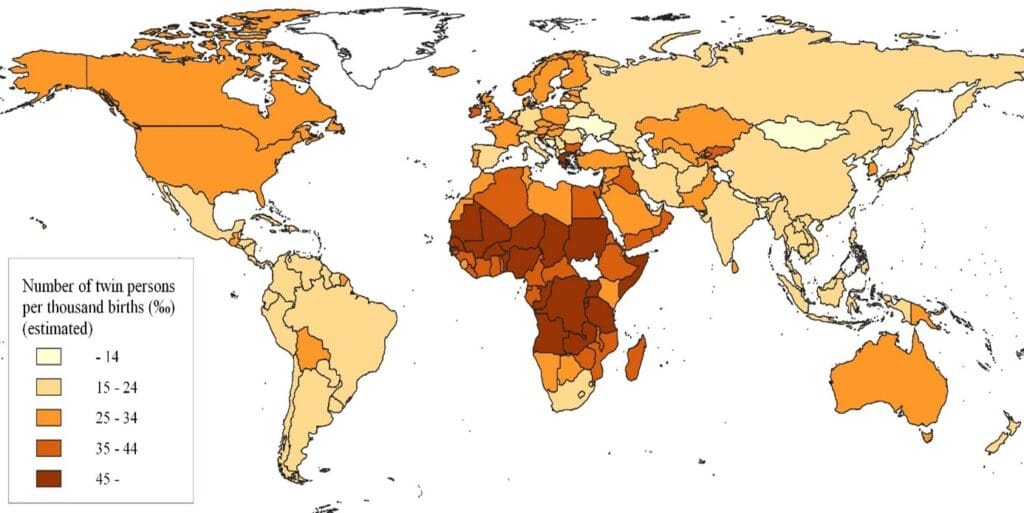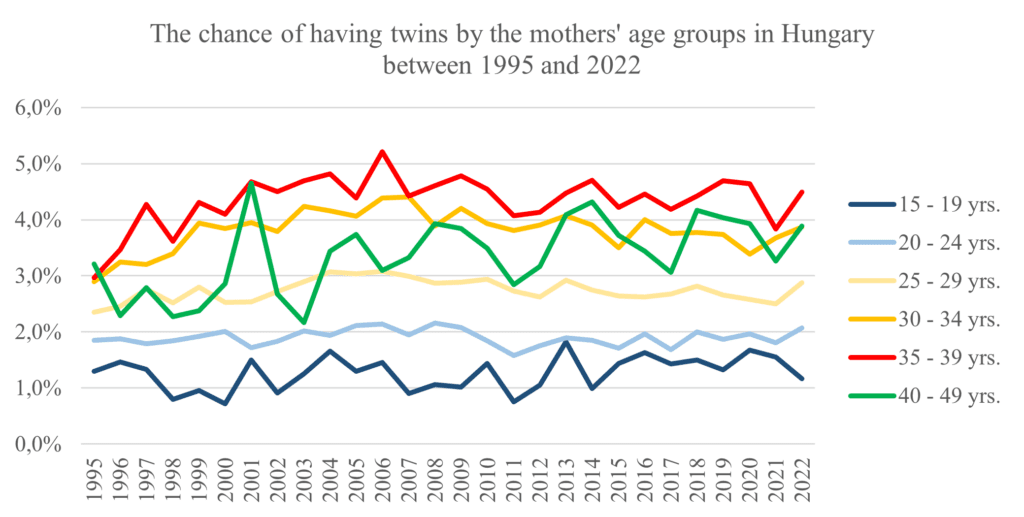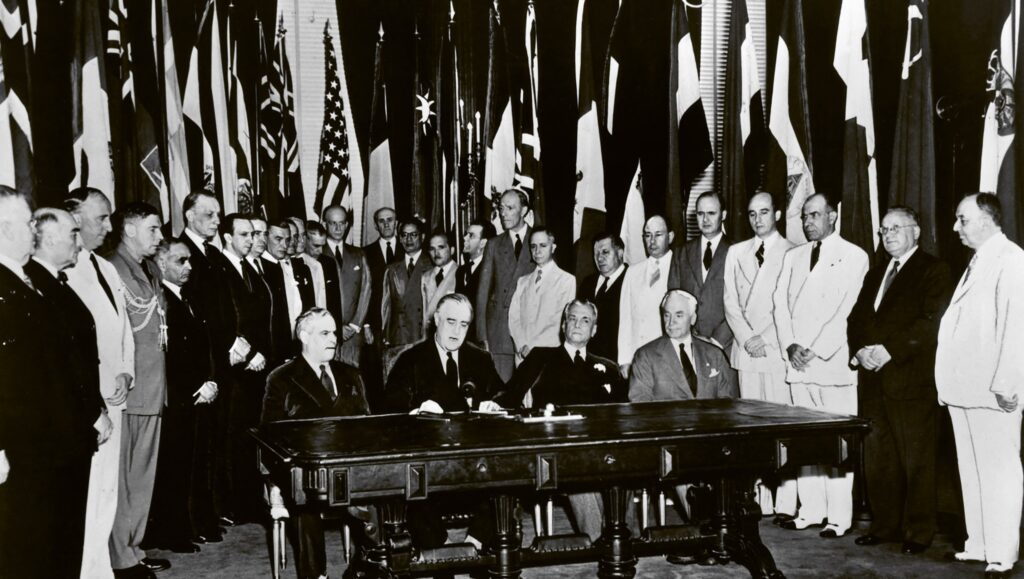‘Multiple births are a very interesting natural phenomenon, which is of great importance from a medical, social and statistical point of view. The question is, how is it created, what is the reason, how many species are there, and in what proportion does it occur in each social stratum?’[1], can be read at the beginning of the first social science-focused publication in Hungary.
The importance of the article was that it was the first statistical summary of twin and multiple births in Hungary and that it relates the increased number of twin births during the First World War to social factors alongside biological causes. It is interesting that the number of twin births also increased during WWII and in wars in general. Saile gave an explanation for this already in 1928: ‘In my opinion, the reason for the indicated change in frequency over time is the absence of those enrolled and the change in the distribution of mothers according to age. The wives of those who were conscripted were predominantly either the same age as them or even younger than them, and on the other hand, the younger age groups were conscripted in a higher proportion than the older ones, and thus there was a shift in the distribution of mothers according to age’, Saile wrote in his summary of his study.
The beginning of professional twin research can be traced back to almost a century and a half ago,
particularly to the founding fathers of twin research, Sir Francis Galton (1883) and Dyonis Hellin (1895).
Twin research is a comprehensive, cross-disciplinary field and currently the focus is on medical, biological and genetic studies. The social science focus only came into the spotlight in the last couple of decades, but the interest in twins can be dated back to much earlier. According to a Hungarian twin researcher and biologist, Julia Métneki, the twin cult is one of the most ancient cults. It is interesting that the first mention of twins can be found in the Bible. Abraham’s grandsons, Isaac’s sons, for example, were fraternal twins: Jacob and Esau. From a scientific point of view, this is extremely important, since this is the first mention of how important the age of their mother, Rebecca was when the twins were born. The other important thing is that the birth of twins was seen as a blessing, a gift from God, while in other cultures we can see examples of the exact opposite. This duality regarding twins has been with us since the beginning of human history.
In recent decades, in addition to the decreasing number of births, the number of twin births has been constantly increasing worldwide, so the rate of twin births has naturally jumped as a result of these two opposing effects.[2] The effects that have the most impact on twin and multiple births can be traced back to both natural and artificial factors. The age of the mother at the time of childbearing and the genetic background are determining natural factors, while on the other side, assisted reproduction procedures are included. In Africa we can see that the fertility rates also have an important increasing impact on twin pregnancy.
Figure 1. The estimated rate of twin births between 2011 and 2019 by countries (per thousand births)

Source: Pári, 2022: Fig 2.3.
Today, twin research is primarily in bloom in countries such as the USA, the Netherlands, Denmark, Sweden, and Australia. Hungary should also be mentioned in this list, because in the last 15 years, internationally recognized surveys have been conducted in our country as well.
When examining the historical trends in twin research literature, there is a consensus among experts that there is an upward trend. In both relative and absolute terms, there are more twin births in the world today than in previous decades and centuries. The primary reason behind this phenomenon is the delay in starting a family, the increase in the average age of mothers at childbearing, which greatly increases the chances of a woman becoming pregnant with twins. In Hungary, for example, the greatest chance for this is in the 35–39 age group.

Source: Hungarian Central Statistical Office (HCSO), own estimation
The second important reason is better access to artificial insemination and IVF programs.
Thirdly, the genetic background is also a factor, that is the propensity to have twins, as confirmed by medical and genetic research. So when we attempt to explain why someone has twins, these factors should be considered in this order, but of course individual life situations provide the ‘average’ that we, researchers, deal with and generalize from.
Every pregnancy is a unique and unrepeatable miracle, we could say a blessing, and this is no different with twin pregnancies. On the other hand, the period of twin pregnancy and the years of rearing small children put a greater burden on twin families, and the upbringing of twins should therefore deserve special attention. The role of the family and its immediate environment is therefore invaluable in the twins’ early years.
It is a sad statistic that a twin pregnancy poses a greater risk for both the mother and the baby, and unfortunately even today the infant mortality rate among twins is very high. Based on the HCSO data of recent decades, twin babies still have a 6–7 times more difficult start of their prenatal and neonatal life than their singleton counterparts.[3]
In Hungary, until the 1990s, for every thousand live births, there were approx. 20-25 twin births (2-2.5% of the annual number of total births), however, from the second half of the nineties until 2006, the ratio increased to 35-36 per thousand. In Hungary, we have seen a serious increase in the number of twin births since 1998, which can be explained by the three reasons mentioned above. We can even come across explanations that link the higher chance of twin conceptions to the changed diet, but comprehensive studies are needed to verify them.
In the past decade in Hungary, twin births ‘stagnated’ at 30–32 per thousand. So, we can see that this was a relatively large increase compared to the trends of almost a generation, but in an absolute sense it does not seem like a significant change. On the other hand, if we look at where in the country a higher proportion of twins were born, we can see that a significant increase in the number of twin births took place in the capital and the agglomeration, as well as in the vicinity of larger cities.
Even if we do not perceive that many twins live among us, there are quite a few now, especially in the younger age groups. The combined effects of the expansion of women’s education from the beginning of the 1990s, and Act CLIV of 1997 on health, regulating infertility treatments, caused a significant increase in the number of twin births. It is a notable demographical fact that among the secondary school aged population (birth cohort 2004–2008), based on statistics,
at least one set of twins is bound to occur in a class of 30 students.
The educational system is not prepared to tackle this. In some cases, for example, teachers are unable to tell monozygotic twins apart. As a matter of fact, there are already more twins among university students with a regular training (birth cohort 1998–2003) today than the average. This is an indirect effect of Act CLIV of 1997[4], which has been in force since 1998. There are of course strong deviations between various regions and universities in Hungary.
Since Galton and Hellin, we can therefore see serious results in twin research, but there are still many questions to be answered, not only from a natural scientific point of view, but also from a social scientific point of view. For this reason, the Mária Kopp Institute for Demography and Families brought together the work of sociology students and twin researchers from social sciences of three Hungarian universities (Pázmány University, Corvinus University and Károli University) and published a volume of studies entitled Twin Studies in Social Sciences.
We hope that the studies can contribute significantly to the results of social science-focused twin research and that they will encourage other researchers to conduct further investigations.
The research is supported by the KDP–2021 Programme of the Ministry for Innovation and Technology with funding from the National Research, Development and Innovation Fund.
[1] Tivadar Saile, ’A többes születések statisztikája’ (Multiple births’ statistics) Statisztikai Szemle, 6(1), January 1928, 33-43 https://epa.oszk.hu/01800/01814/00001/pdf/Statisztikai_Szemle_EPA01814_1928_01_033-043.pdf, accessed 23 Feb. 2024
[2] András Pári, ‘Chapter 2 – Prevalence of twinning worldwide’ in Adam Tarnoki, David Tarnoki, Jennifer Harris, Nancy Segal (Eds), Twin Research for Everyone, Academic Press, 2022, 9–22, ISBN 9780128215142, https://doi.org/10.1016/B978-0-12-821514-2.00026-X
[3] András Pári, Main Characteristics of Hungarian Twin and Multiple Births in Official Statistics, Twin Research and Human Genetics, 17(5), 359–368, https://doi.org/10.1017/thg.2014.52
[4] Act No. CLIV of 1997 on health, https://leap.unep.org/countries/hu/national-legislation/act-no-cliv-1997-health, accessed 26 Feb. 2024








